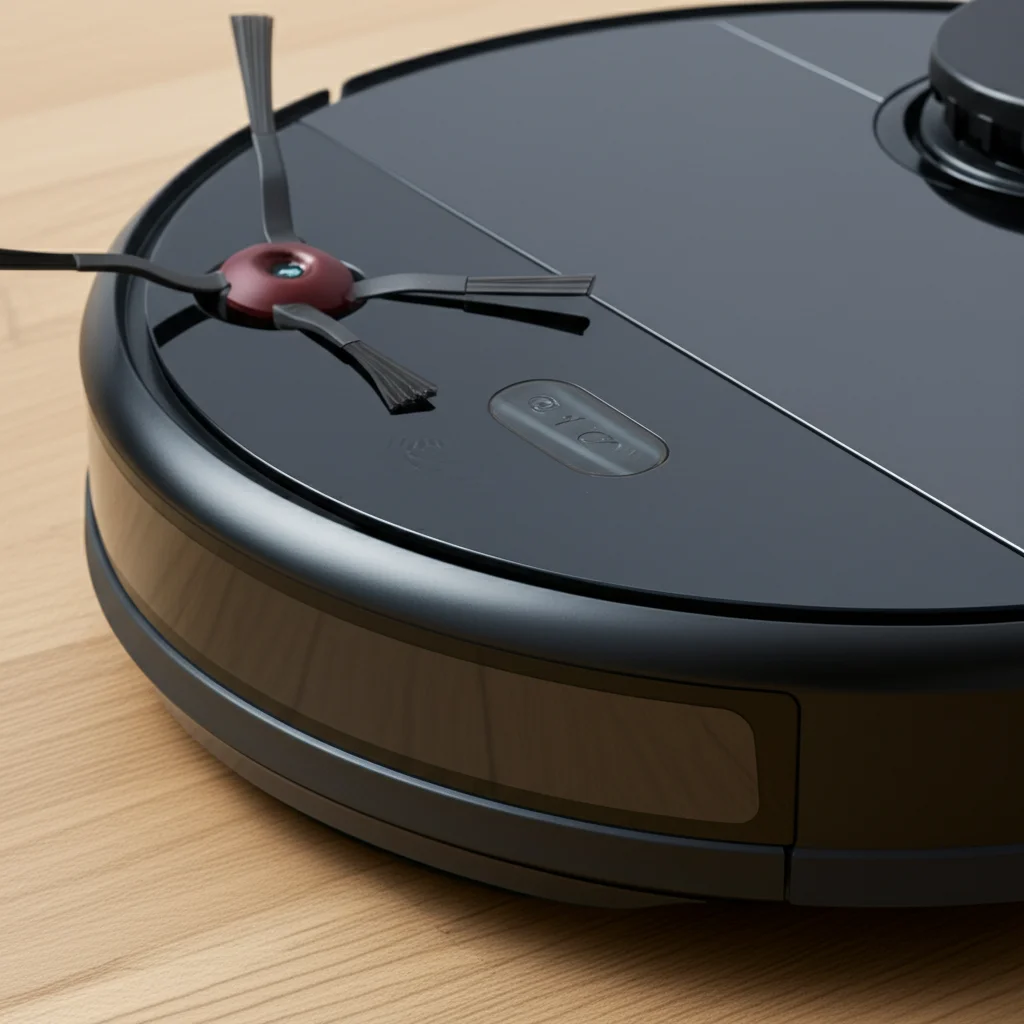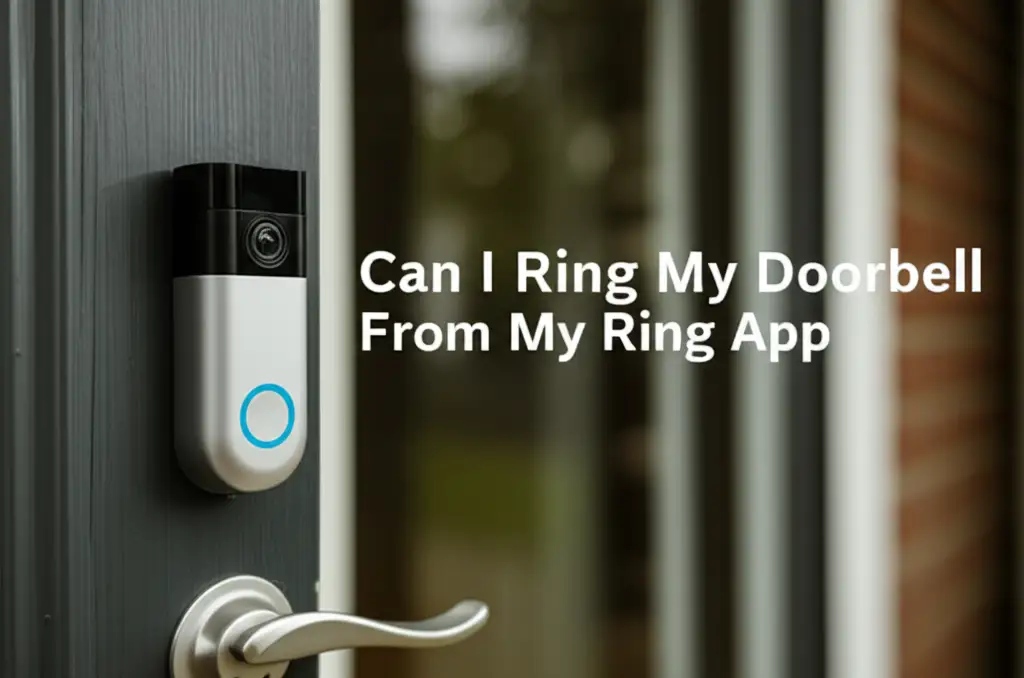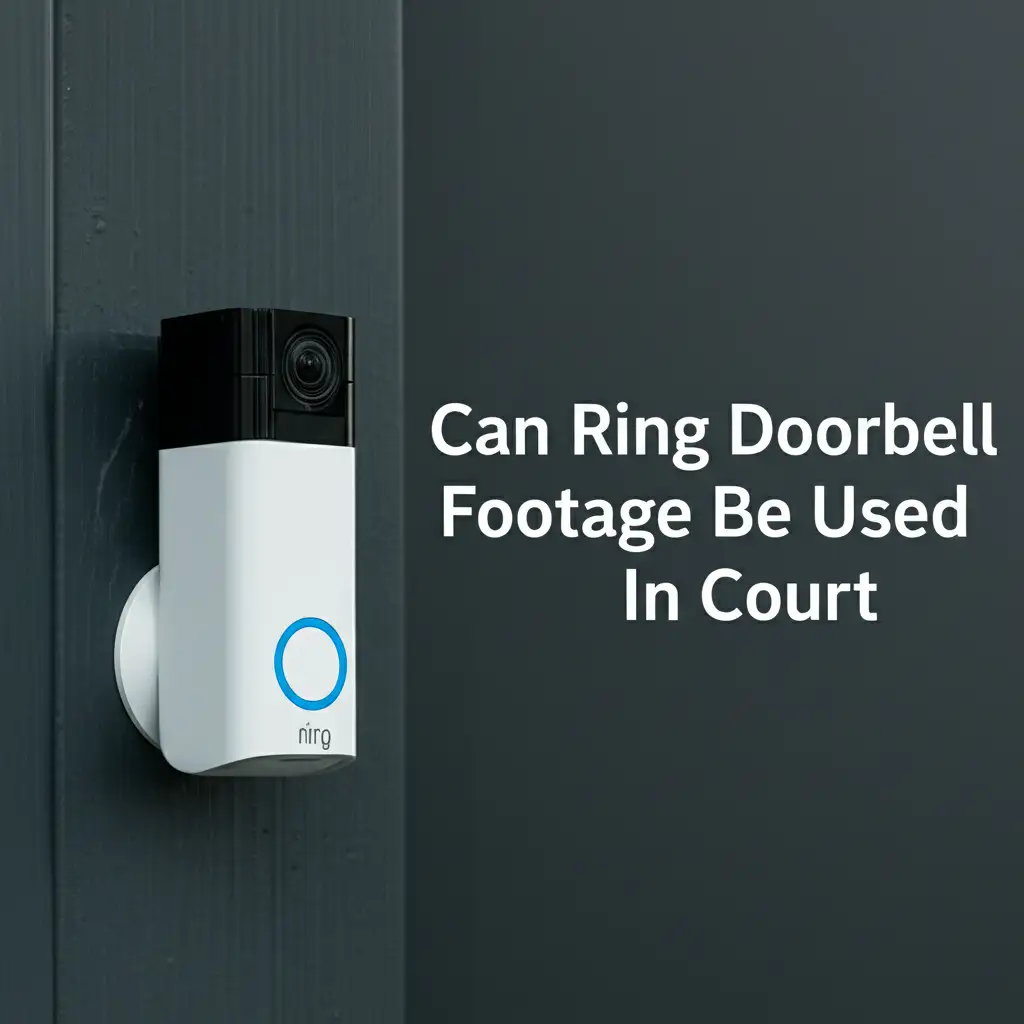· Todd Martin · Smart Home Maintenance · 16 min read
How To Clean Ring Camera Lens

Achieve Clear Views: How to Clean Your Ring Camera Lens Effectively
Is your Ring camera footage looking a bit fuzzy? A blurry image can compromise your home security. I understand the frustration of unclear video when you need to see what is happening. A dirty lens is often the simple reason behind poor Ring camera performance.
Maintaining your Ring camera is important. Keeping the lens clean ensures you get the best image quality. This helps your camera detect motion accurately. It also makes sure you can clearly identify visitors or potential threats. This guide will show you how to clean Ring camera lens surfaces properly. We will cover necessary tools, step-by-step instructions for indoor and outdoor cameras, and common challenges. You will learn to keep your surveillance clear.
Takeaway
- Always power off your Ring camera before you begin cleaning.
- Use only soft, non-abrasive materials like microfiber cloths.
- Avoid harsh chemicals or rough cleaning agents on the lens.
- Clean your Ring camera lens regularly to maintain clear footage.
- Address specific outdoor issues like mold or insect residue with care.
Clear Lens, Clear View: The Quick Answer
To clean your Ring camera lens, power off the device first. Gently wipe away loose debris using a dry microfiber cloth or a soft brush. For stubborn dirt or smudges, lightly dampen a fresh microfiber cloth with distilled water or a dedicated camera lens cleaning solution. Wipe the lens carefully. Finally, dry the lens completely with a separate, clean, dry microfiber cloth to prevent streaks.
Why Clear Footage Matters for Your Ring Camera
Your Ring camera is a vital part of your home security system. Its primary purpose is to provide clear video surveillance. When the lens becomes dirty, this purpose is compromised. The image quality declines.
A dirty lens causes blurry footage. This means you might not see important details. For example, you may not recognize faces. You could miss critical events happening outside your home. My own experience shows how a smudged lens can lead to false alarms. It can also make it hard to confirm who is at the door.
Clear footage also improves the camera’s motion detection. A clean lens allows the camera to accurately identify movement. Dust or smudges can trick the sensor. This leads to missed events or unnecessary alerts. Both situations are problematic for security. You want your system to work as designed. A clean lens ensures reliable performance. It keeps your home protected as it should be.
The longevity of your Ring camera also benefits from proper care. Dirt and grime can degrade the lens coating over time. Regular, gentle cleaning protects this delicate surface. This helps your camera last longer. It performs better throughout its lifespan. Investing a small amount of time in cleaning your Ring camera lens pays off. It protects your family and property effectively. This ensures you get the most from your security investment.
Essential Tools for Safe Ring Camera Lens Cleaning
Gathering the right tools before you start is important. Using improper materials can scratch the lens. This permanently damages the camera’s image quality. I always make sure I have gentle, non-abrasive items ready. This ensures a safe and effective cleaning process for my Ring camera lens.
First, you need microfiber cloths. These cloths are specifically designed for delicate surfaces. They pick up dust and dirt without scratching. Avoid paper towels or rough cloths. They can leave fibers or tiny scratches on the lens. I keep several clean microfiber cloths on hand. One for dusting, one for damp cleaning, and one for drying.
Next, consider an air blower or soft brush. A small, handheld air blower removes loose dust. It does this without touching the lens. A very soft, clean brush, like a camel hair brush, works similarly. It gently sweeps away particles. This step is important before any wiping. It prevents scratching the lens with embedded grit. If you are wondering how to clean a camera lens effectively, these tools are primary.
For stubborn spots, you will need a liquid solution. Distilled water is often enough for most smudges. Tap water contains minerals. These minerals can leave water spots or streaks. Distilled water is pure. It evaporates cleanly. You can also use a dedicated camera lens cleaning solution. These solutions are formulated for optics. They leave no residue. Do not use household glass cleaners. They often contain harsh chemicals like ammonia. These chemicals can damage lens coatings. Learn more about effective general lens cleaning techniques by reading about how to clean lens on wii.
Finally, you might need cotton swabs for edges. These are useful for reaching tight spots around the lens. Use them sparingly and with great care. Dampen them slightly with distilled water. Remember, the goal is to clean your Ring camera lens gently. The right tools make this process safe and successful. They protect your investment in home security.
Step-by-Step: Cleaning Your Outdoor Ring Camera Lens
Outdoor Ring cameras face many environmental challenges. Dust, dirt, rain, pollen, and even spiderwebs can accumulate. These elements directly affect lens clarity. Cleaning an outdoor camera requires a careful approach. I always plan my steps to avoid damage. This guide shows how to effectively clean your outdoor Ring camera lens.
Preparation and Safety First
Before you start, choose a clear, dry day. Avoid cleaning in direct sunlight. This can make water evaporate too quickly and leave streaks. Always power off your Ring camera before touching the lens. This prevents accidental activation or damage. If the camera is high up, use a sturdy ladder. Ensure it is stable. Have all your tools within easy reach. Safety is important. You do not want to fall or drop your camera.
Removing Loose Debris
Begin by addressing loose dirt and dust. Use an air blower to gently puff air across the lens surface. This dislodges larger particles. Avoid using your breath. Breath contains moisture that can condense on the lens. Follow this with a soft-bristled brush. Gently sweep any remaining dust away. Brush from the center of the lens outward. Be very light with your touch. The goal is to remove debris without scratching. This crucial first step prevents abrasive particles from damaging the lens during wiping.
Tackling Stubborn Grime
For dirt, smudges, or water spots, a wet cleaning method is necessary. Dampen a clean microfiber cloth with distilled water. It should be just barely damp, not dripping. Gently wipe the lens in a circular motion, starting from the center and moving outwards. Do not press hard. Light pressure is enough. For persistent grime, a specialized camera lens cleaning solution works best. Apply a tiny amount to the microfiber cloth, not directly to the lens. Then, wipe the lens surface carefully. This method works well for general grime. For achieving a perfectly clear finish, knowing how to clean glass without streaks is helpful. The same principles apply to camera lenses.
Addressing Mold and Algae Growth
Outdoor cameras can develop mold or algae in damp, shaded areas. This requires extra care. For minor mold spots, try the distilled water method first. If that does not work, a very diluted white vinegar solution (1 part vinegar to 10 parts distilled water) can be used. Apply it to a separate microfiber cloth, then gently dab the affected areas. Immediately wipe it clean with a fresh, damp cloth with plain distilled water. Then dry thoroughly. Vinegar is acidic. It can harm surfaces if left on too long. Always test a small, inconspicuous area first. Learn more about how to clean mold with vinegar for general mold removal tips, but remember to be extra cautious with electronics. While it is effective for surfaces, direct contact or too much solution can damage your camera. You can also explore methods for how to clean mold in shower for more general mold removal strategies.
Drying and Final Check
After cleaning, it is important to dry the lens completely. Use a separate, clean, dry microfiber cloth. Gently wipe the lens again in circular motions. Ensure no moisture remains. Moisture can lead to new streaks or spots. Once dry, power on your Ring camera. Check the live view feed. The image should be crisp and clear. If you see any remaining smudges, repeat the wet cleaning and drying steps. This comprehensive approach ensures your outdoor Ring camera lens is spotless. It guarantees optimal performance in all weather conditions.
Step-by-Step: Cleaning Your Indoor Ring Camera Lens
Indoor Ring cameras generally accumulate less grime than outdoor models. They are not exposed to harsh weather or environmental debris. However, dust, fingerprints, and occasional smudges still occur. These can reduce image quality. Cleaning an indoor Ring camera lens is usually simpler. I find it takes less time and effort. Here’s how to ensure your indoor camera provides crystal-clear views.
Gentle Dusting
Indoor cameras primarily collect dust. This dust can make images appear hazy. Start by turning off your Ring camera. This step protects the device. Use a clean, dry microfiber cloth. Gently wipe the entire surface of the camera, including the lens. Do not press hard. The goal is to lift the dust, not rub it in. For dust trapped in crevices around the lens, a soft-bristled brush or an air blower works well. Direct a gentle puff of air at the lens. This displaces the dust without any physical contact. Regular dusting prevents dust buildup. This keeps your indoor camera looking good and performing well.
Erasing Fingerprints and Smudges
Fingerprints and smudges are common on indoor cameras. They happen when someone handles the device. These marks can be oily and difficult to remove with just a dry cloth. For these, a slightly damp cloth is needed. Dampen a fresh microfiber cloth with distilled water. Make sure the cloth is not dripping wet. It should feel barely moist. Gently wipe the lens surface. Use small, circular motions. Start from the center of the lens and move outwards. This technique helps to lift the smudge without spreading it.
For particularly stubborn fingerprints or grease, a tiny drop of a specialized camera lens cleaning solution can be applied to the cloth. Never apply liquid directly to the lens. This prevents liquid from seeping into the camera’s sensitive internal components. After using a damp cloth or cleaning solution, immediately follow up with a separate, dry microfiber cloth. Gently buff the lens until it is completely dry and streak-free. This ensures no water spots remain. The process for cleaning any lens surface, like how to clean lens on wii, follows these gentle principles. Your indoor Ring camera lens will be clean. It will provide a clear, sharp picture. This maintains your indoor security monitoring effectively.
Common Challenges and How to Address Them
Even with regular cleaning, some specific issues can arise with your Ring camera lens. These challenges require targeted solutions. Knowing how to handle them helps maintain your camera’s optimal performance. I have faced several of these myself. I always approach them with patience and the right methods.
Hard Water Spots and Mineral Buildup
Outdoor cameras often suffer from hard water spots. Rainwater or sprinkler systems can leave mineral deposits as they dry. These spots look like white or cloudy marks. They are difficult to remove with just dry wiping. To address these, use distilled water. Distilled water contains no minerals. Dampen a microfiber cloth with distilled water. Gently rub the affected area. You might need to apply the damp cloth for a few moments to soften the deposits. Then, gently wipe away. If spots persist, a tiny amount of pure isopropyl alcohol (90% or higher) on a cotton swab can be carefully dabbed onto the spot. Immediately wipe it clean with a damp distilled water cloth, then dry thoroughly. Be extremely careful with alcohol. Avoid letting it touch plastic camera housing.
Insect Residue and Spiderwebs
Spiderwebs are a constant battle for outdoor cameras. Spiders love to build webs around the lens. This blocks the view and triggers false motion alerts. For spiderwebs, a soft brush or an air blower often suffices. Gently brush the webs away. For dried insect residue, which can be sticky, try the damp microfiber cloth with distilled water. Hold the damp cloth over the residue for a minute or two. This softens it. Then, gently wipe it away. Avoid scraping or using fingernails. This can scratch the lens. Regular checks are the best prevention for these issues.
Scratches and Damage Prevention
Scratches are the most disheartening problem. Once a lens is scratched, it is very difficult to repair. The damage is often permanent. This directly impacts image clarity. Prevention is crucial. Always use soft, clean microfiber cloths. Never use abrasive materials like paper towels or rough sponges. Always remove loose debris with an air blower or soft brush before wiping. Avoid using harsh chemicals. These can strip lens coatings, making them more prone to scratches. If you are cleaning glass in other areas, such as when learning how to clean wax off glass or even for complex residues like for how to clean resin from glass, remember that different substances need specific approaches. For your Ring camera lens, the emphasis is always on gentle, non-abrasive methods to prevent damage. Proactive care is the best defense against scratches.
Maintaining Optimal Ring Camera Performance: Beyond the Lens
Cleaning the lens is a key part of Ring camera maintenance. However, other steps also contribute to overall performance. I consider these routine practices. They ensure my camera system works effectively. These tips go beyond just cleaning the glass. They help your Ring camera function reliably long-term.
Regular Cleaning Schedule
Consistency is important for camera maintenance. Establish a regular cleaning schedule. For outdoor cameras, I recommend cleaning the lens monthly. This frequency helps prevent major buildup. It addresses issues like dirt, pollen, and spiderwebs before they become severe. Indoor cameras might need less frequent cleaning. Quarterly cleaning is often sufficient. However, if your indoor camera is in a high-traffic area, or near a pet, you might need to clean it more often. A consistent schedule means you stay ahead of grime. This prevents blurry footage from becoming a persistent problem.
Environmental Protection
Outdoor cameras are exposed to the elements. Protecting the camera housing and lens from harsh weather helps. Consider installing your camera under an overhang or in a sheltered spot. This reduces direct exposure to rain, snow, and strong sunlight. Some Ring camera models have protective covers or hoods available. These accessories shield the lens from extreme weather. They also help minimize dust and debris accumulation. While you cannot control all environmental factors, you can minimize their impact. This reduces the frequency of intensive lens cleaning. It also extends the life of your device.
Firmware Updates and App Settings
Optimal camera performance is not just about a clean lens. It also involves software. Regularly check for and install firmware updates for your Ring camera. Firmware updates often include bug fixes. They can also improve camera performance. Sometimes, updates enhance image processing or motion detection. You can usually manage these updates through the Ring app.
Review your Ring app settings periodically. Motion detection sensitivity might need adjustment. For example, if you live in a windy area, high sensitivity might cause too many false alerts. Lowering it slightly can help. Also, check your privacy zones and video quality settings. Ensuring these settings are correct helps your camera operate efficiently. These combined efforts—a clean lens, environmental protection, and proper software management—keep your Ring camera performing at its best.
Frequently Asked Questions
How often should I clean my Ring camera lens?
For outdoor Ring cameras, clean the lens at least once a month. This helps remove dirt, dust, pollen, and spiderwebs that accumulate quickly. Indoor Ring cameras generally need less frequent cleaning, perhaps every three to six months. However, if you notice blurry footage or smudges, clean the lens immediately, regardless of the schedule. Regular checks ensure optimal performance.
Can I use glass cleaner on my Ring camera lens?
No, do not use standard household glass cleaners on your Ring camera lens. Many glass cleaners contain ammonia or other harsh chemicals. These chemicals can damage the delicate lens coatings or the camera’s plastic housing. Always use distilled water or a specialized camera lens cleaning solution. These options are safer for sensitive optics.
What if my Ring camera lens is scratched?
Unfortunately, a scratched Ring camera lens is often a permanent problem. Scratches cannot be easily removed or repaired. They will likely cause blurry spots or distortion in your video footage. Prevention is key. Always use soft, non-abrasive materials for cleaning. If the scratch severely impacts functionality, you might need to consider replacing the camera or the lens module, if possible.
How do I prevent spiderwebs on my outdoor Ring camera?
To prevent spiderwebs, clean your camera regularly to remove existing webs. You can also spray a spider repellent around (but not directly on) the camera housing and mounting area. Some people use a small amount of petroleum jelly around the camera base. This makes it difficult for spiders to anchor their webs. Consider installing the camera under an overhang to reduce spider activity.
Does cleaning the lens improve night vision?
Yes, cleaning the lens can significantly improve night vision performance. Night vision relies on the camera’s infrared (IR) sensors and a clear lens. A dirty or smudged lens can scatter the IR light, making night footage appear hazy or distorted. Removing dirt and grime allows the IR light to pass through clearly, resulting in sharper and more effective night vision.
Is it safe to use alcohol to clean my Ring camera lens?
Pure isopropyl alcohol (90% or higher) can be used very carefully for stubborn spots like hard water stains, but it is generally not recommended for routine cleaning. Always apply it to a microfiber cloth first, never directly to the lens. Avoid contact with plastic housing, as it can damage some plastics. Distilled water or dedicated lens cleaning solutions are safer and preferred for general cleaning.
Keep Your Ring Camera Vigilant
Maintaining a clear view for your home security system is simple. You now understand how to clean Ring camera lens surfaces properly. This small effort yields significant benefits. A clean lens ensures sharp, reliable footage. This protects your home and family. It maximizes the effectiveness of your smart home investment.
Regular cleaning, using the right tools and techniques, prevents common issues. You can tackle dust, dirt, smudges, and even environmental challenges like mold. Following these steps helps your Ring camera perform at its best, day and night. Do not let blurry video compromise your peace of mind. Take a few minutes today. Ensure your Ring camera lens provides the clear, crisp images you rely on for security. Your home’s safety depends on it.





